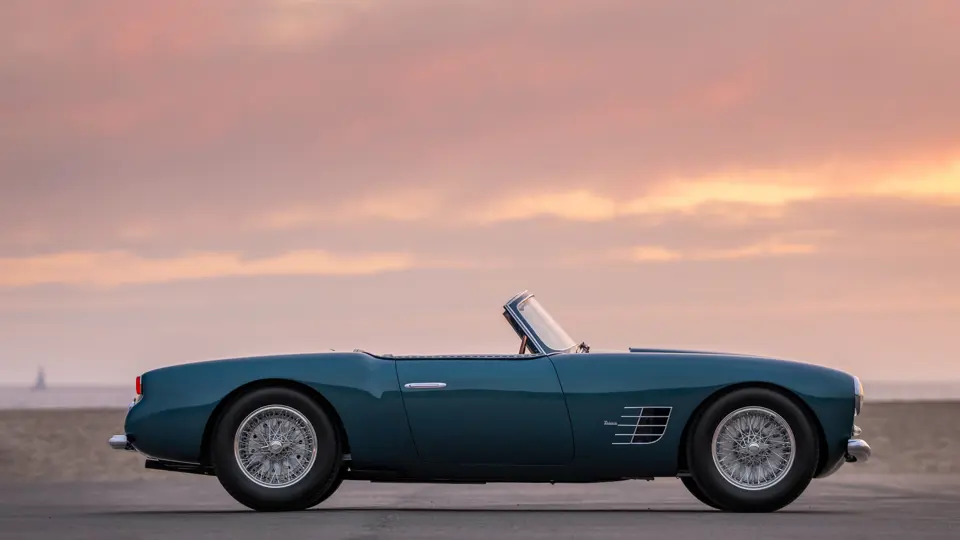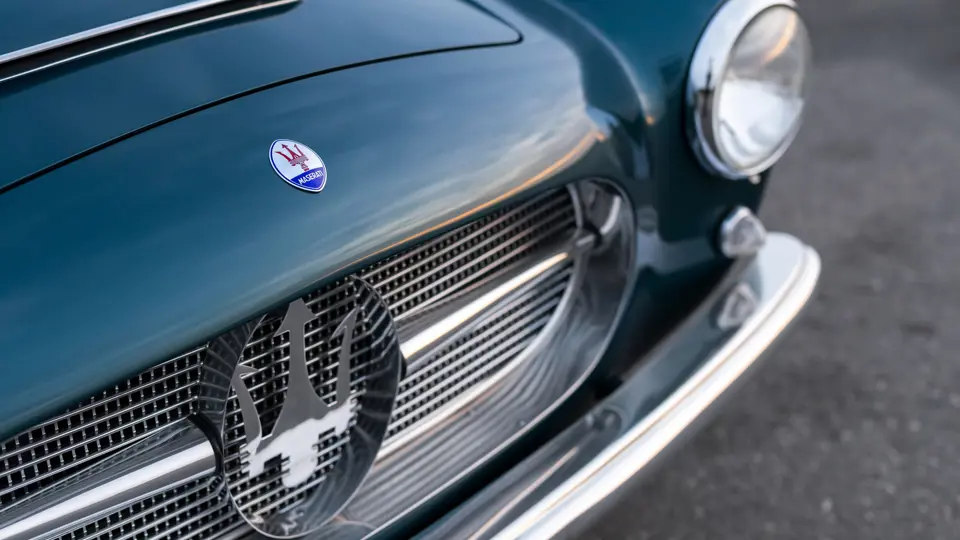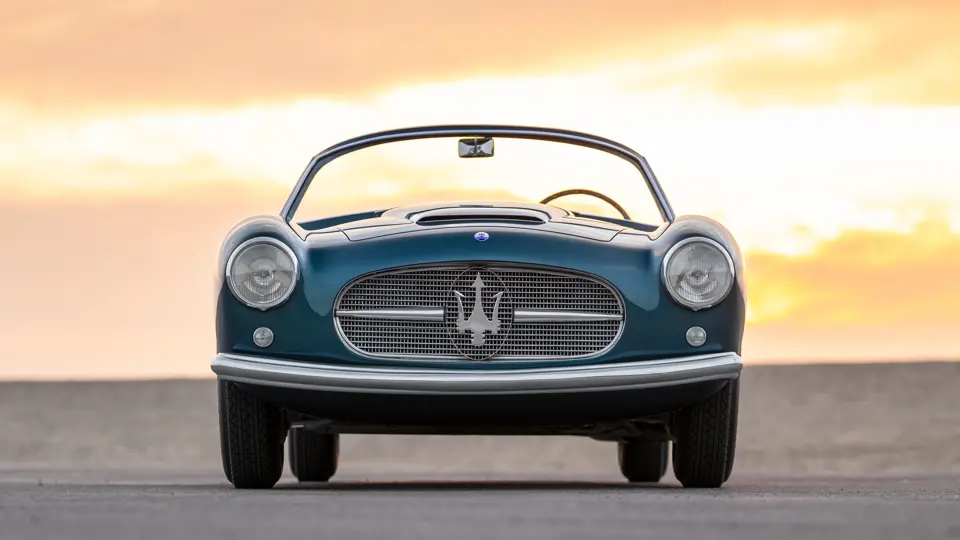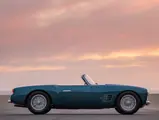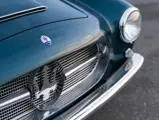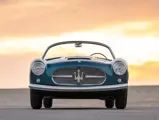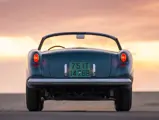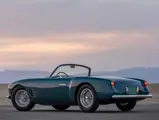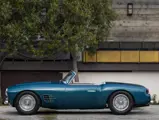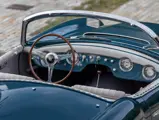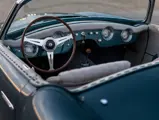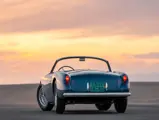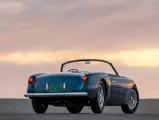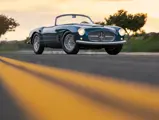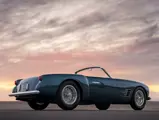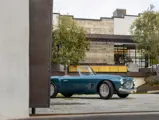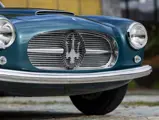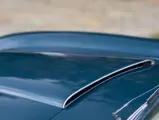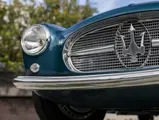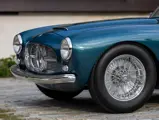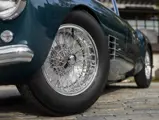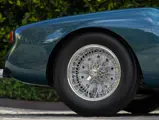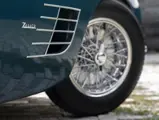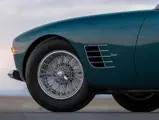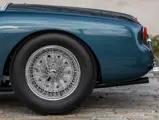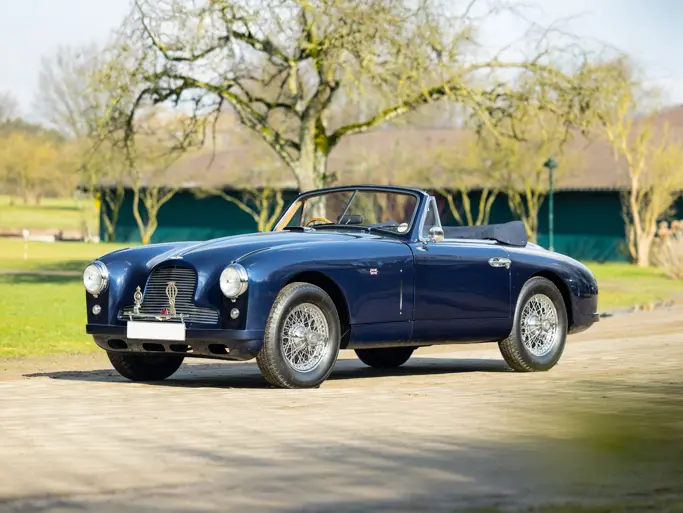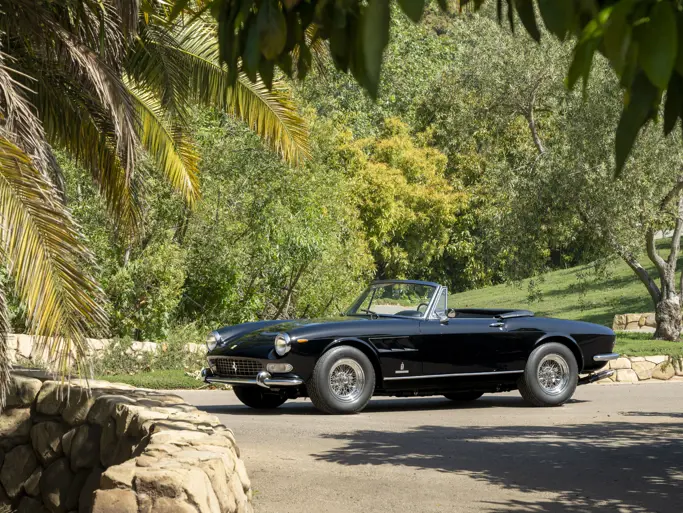
1955 Maserati A6G/54 2000 Spyder Zagato by Zagato
{{lr.item.text}}
Price Upon Request
{{bidding.lot.reserveStatusFormatted}}
- One-off example with unique Zagato coachwork with unique build features and interior
- Exhibited at the 1955 Geneva Salon and the 1956 Paris Salon
- Originally ordered by Argentine president and renowned sports car enthusiast Juan Perón
- Best of Show winner at the 2005 Concorso Italiano, and class winner at the 2004 Quail Motorsports Gathering amongst numerous other concours appearances
- Class winner and awardee of the Most Elegant Open Car award at the 2024 Pebble Beach Concours d’Elegance
- Completed the 2022 Colorado 1000
- Documented by factory production records, factory build sheet copies, and extensive history report by marque expert Adolfo Orsi
- Desirably retains matching-numbers engine
- Perfect for driving tours or top-tier concourse events
THE ULTIMATE COLLABORATION
In the pursuits of mankind, be it in the milieu of art, sport, or commerce, there have occasionally transpired collaborative moments that seem to transcend the limitations of reality. This widely understood phenomenon of a product that somehow exceeds the sum of its parts may be an aberration of our sense of simple arithmetic, but we have undoubtedly witnessed it nevertheless.
Think of those nearly magical moments when two agents, each of outstanding individual merit in its own right, combine to forge something that wildly succeeds beyond anyone’s imagination. Think Paul and John; Magic and Kareem; Nike and MJ. In each of these examples, two individual forces combined to result in a product so special that it evolved into a legitimate cultural moment before flirting with the status of legend.
In the automotive realm, there may be no better embodiment of this concept than Maserati and Zagato during the early 1950s; one a racing powerhouse aspiring to road car legitimacy, the other a design concern on the cusp of its most expressive and timeless sculptures. The ultimate result of this iconic collaboration was none other than the peak of form and function; a model so brutally effective in competition it hardly dared to be so voluptuous, and a car so achingly beautiful to look at it was barely to be believed it could be so fast and agile—the Maserati A6G/54 Spyder with coachwork by Zagato.
For within this noteworthy competition-proven model, which was bodied by Zagato as a racing berlinetta, the engineers of Modena advanced the ultimate development of the A6G sports-racing platform, while the stylists at the Milanese coachbuilder penned one of their most celebrated designs. Yet as powerful, beautiful, and rare as the closed berlinetta version of the A6G/54 was, the model was actually inaugurated with an example even more special, the featured lot, and the only open-bodied example built; chassis number 2101.
The A6G/54 was initially introduced at the 1954 Turin Motor show with a prototype built on chassis number 2063 that wore 2+2 coupe coachwork by Frua. As a roadgoing development of the A6GCS/53 barchetta sports-racers, the new model’s advanced dual-overhead cam engine was now detuned for street use with chain-driven timing gear and wet sump lubrication.
Following the Frua-bodied show car, Maserati commenced a new numbering sequence for the model that began with chassis number 2101, the featured Spyder. Ultimately limited to a modest batch of 60 total examples, the A6G/54 chassis output was divided among three coachbuilders, with a Michelotti-designed coupe built by Allemano accounting for approximately 21 cars, open and closed versions by Frua reaching 18 cars, and the Zagato examples making up the balance of 21 cars.
Zagato’s version is overwhelmingly preferred by many sporting enthusiasts for its aerodynamic, curvaceous styling, which was executed in aluminum alloy for optimal weight savings and competition advantage. While the cars by Allemano and Frua were positioned more as luxurious grand tourers, the Zagato cars were just as assuredly racing machines, with their lightweight coachwork and more spartan interior arrangements. Yet as thrilling as the racing berlinettas are, the sole open Spyder teases a glimpse of so much more…
UNREALIZED TIMELINES – FROM PARIS TO LA PAMPA
A research report by marque authority Adolfo Orsi commissioned by the most recent owner adds considerable insight to past anecdotal accounts that chassis number 2101 may have been originally ordered by Juan Perón, the famed postwar Argentinian presidential strongman and world-renowned sports car enthusiast. While no “smoking gun” document has yet surfaced that unequivocally demonstrates Peron’s connection to the car, Orsi lays out a convincing field of circumstantial evidence that lends considerable weight to the claim.
According to Orsi’s research of factory archives, the Spyder was dispatched from Maserati to Zagato for coachwork on November 18, 1954, with a note near the customer field that read “Argentina”. This clue that the A6G/54 was slated for ownership by Perón was later indirectly confirmed by a 1961 piece of correspondence from the factory.
There is little doubt that the runaway successes of Argentine national Juan Manuel Fangio on auto racing’s biggest stage greatly invigorated the appreciation of motorsports and automotive culture in his homeland. Having already won one world championship for Alfa Romeo in 1951, Fangio was frequently racing for Maserati during 1953 and early 1954, serving as a link between the automaker and President Perón that would pave the way for the import of industrial machinery made by Modena’s subsidiaries.
Chassis number 2101 might well have been delivered to its Argentine buyer had not politics exploded in a different direction. By early 1955, Perón had begun to fall out of public favor, and this overwhelming national sentiment soon surged into a full-on popular revolt that resulted in the strongman’s exile. This remarkable turn of events had a silver lining, of course; with the Spyder remaining in its possession, Maserati had retained an ideal flagship to show off during the upcoming season of auto salons.
Photographic evidence demonstrates the gradual aesthetic evolution of chassis number 2101 during its first few years. A picture of the Spyder taken at the Zagato plant during the winter of 1954 to 1955 shows it fitted with a split windscreen that extended to the far edges of the body, and an outsized and stylized Trident ornament on the grille that was notably missing its vertical base. Also featuring an unvented flat hood, foglamps, and unvented front fenders, the car was equipped with Borrani wire wheels and finished in Blu Algido Scuro (Dark Ice Blue) paint. Photos taken a few months later in early 1955 show the windshield in the same basic shape, but now as a single pane of glass without a dividing spine, while the front fascia has been fitted with a wire mesh grille, over which the unconventional Trident ornament was completed with the base limb.
In this appearance, the A6G/54 made its first public appearance at the Geneva Salon in March 1955, where it was beautifully flanked by an A6GCS/53 race car, encapsulating the company’s finest offerings for both grand touring and sports-racing applications. After receiving rave reviews from onlookers and the automotive press, and with delivery to Perón most likely in a very doubtful state by this time, chassis number 2101 was returned to the Maserati factory, where it would undergo further adjustments.
Nineteen months later 2101 was presented again, this time at the 1956 Paris Salon on the stand of Thepanier, the official Maserati importer to France. As evidenced by period media coverage of the show, by this time the A6G/54 was fitted with several key details that defined its final lasting configuration, including a smaller curved one-piece wraparound windscreen, a new hood with a raised engine intake scoop, elegantly vented front fenders, and a new grille ornament consisting of a more standard Trident badge. Following the show’s conclusion, 2101 was returned to the factory again and remained there in storage until April 1959.
NEW HORIZONS – A JOURNEY INTO AMERICAN OWNERSHIP
Issued a certificate of origin in December 1958, the A6G/54 was earmarked for customer availability and soon sold to Louis W. Schroeder, an American diplomat working at the US embassy in Paris. A few months after taking delivery of the Spyder in April 1959, Mr. Schroeder drove the Maserati to La Sarthe to watch the 1959 24 Hours of Le Mans, where he was undoubtedly delighted by fellow countryman Carroll Shelby’s victory with the Aston Martin team.
In April 1960 Schroeder sold the Maserati to Sherrod Santos, a US Air Force lieutenant-colonel assigned to the Chateauroux Air Station in France. Santos commissioned the factory to rebuild the engine in August 1962, although he was dissatisfied with the results and engaged further work from a French specialist. Per his correspondence with the Maserati factory, by November 1963 Santos had returned stateside to work at Langley Air Force Base in Virginia, accompanied of course by the stylish Spyder.
In 1966 Colonel Santos sold the Maserati (which by this time was repainted in Rosso), in all likelihood to George Sackman of Carmel, California. Sackman undoubtedly owned the A6G/54 by the time of his factory correspondence of July 1968, and he kept the car as late as 1970 before selling it to San Francisco-area resident Angelo Ferro, the Italian-American owner of the Genoa Racing Team.
After very little use Mr. Ferro put 2101 into storage, and it remained domiciled for a remarkable period of approximately 30 years, ensuring a high degree of originality. In August 2001 the Maserati was visited at the team’s facility in nearby Novato by Adolfo Orsi, who was engaged to help research the car’s history. At this time team chief Ed Nelson was overseeing a comprehensive restoration of the Spyder to its 1958 configuration, which was ultimately completed in 2003. This work included a rebuild of the engine by Ferrari specialist Paul Hasselgren, a repaint in the original factory color of Blu Algisto Scuro by Rob Etcheverry, and a retrimming of the interior by Ken Nemineck.
The Maserati then began a tour of world-class concours d’elegance, starting with presentation at the 2003 Pebble Beach Concours d’Elegance. A year later at the 2004 Quail Motorsports Gathering the Spyder garnered 1st place in the Post War Sports Car class, and in 2005 the car won Best of Show at Concorso Italiano, and multiple awards at the Palo Alto Concours d’Elegance. Around this time the A6G/54 was the subject of a feature article in the July 2005 issue of Sports Car International magazine, and it was also profiled in the April 2006 issue of Classic Cars.
Following an invitation to the special Zagato display at the Quail once again in 2006, the Maserati was acquired in October 2010 by a respected collector based in the United Kingdom. The Spyder’s exhibition career then continued with an appearance in September 2011 at the special Zagato presentation at the Florence Concorso Unique Special Ones, after which the car was displayed at the Museo Panini in Modena for nearly 18 months. This period included a more temporary exhibition across town to commemorate the official opening of the Museo Casa Natale Enzo Ferrari. After completing its museum appointments in Italy, the Maserati continued to be shown at the world’s most exclusive automotive gatherings, with appearances at the 2013 Villa d’Este Concorso d’Eleganza and the St. James Concours d’Elegance.
In November 2013 the Maserati was sold in an auction titled Art of the Automobile, held in late 2013 in partnership between what was then RM Auctions and Sotheby’s at Sotheby’s York Avenue headquarters to the well-known American collector Oscar Davis. Following his purchase, the car was fastidiously maintained by the respected Leydon Restorations of Bucks County, Pennsylvania. Their attention included the installation of a new fuel pump, a rebuild of the carburetors, and attention to the brakes and fuel system.
Following Mr. Davis’ unfortunate passing, the A6G/54 was again offered by RM Sotheby’s in August 2022 alongside the remainder of his impressive collection, at which point the car was sold to a respected collector based in Southern California. After successfully completing the 2022 Colorado Grand, the Maserati was entrusted to the well-known Italian sports car specialists Fast Cars Ltd of Redondo Beach, California, for additional restoration measures. Mr. Orsi was again retained to provide details of historic accuracy, resulting in his thorough report (which also notes the continued presence of the matching-numbers engine). Following the completion of this work, the Spyder returned to the Pebble Beach Concours d’Elegance in August 2024, this time winning its class and earning the Jules Heumann Special Award for the Most Elegant Open Car.
Incredibly rare and meticulously restored over a twenty year period, this award winning one-off Zagato Spyder is a breathtaking example of Maserati’s celebrated Italian Sports Car Championship-winning A6G/54 model. It is desirably documented with factory build records, build sheet copies, period photographs, former owner’s correspondence, prior registrations, magazine articles, an entry in Walter Baumer’s book Maserati A6G 2000 Zagato, and the highly detailed history report by marque authority Adolfo Orsi.
Ideal for further display at the world’s most exclusive concours d’elegance, and eligible for vintage touring events including the Mille Miglia, this exquisite slice of la dolce vita would make an unparalleled addition to any sporting collection. As one of the automotive realm’s ultimate collaborations, 2101 would make a peerless acquisition for any sports car enthusiast; for the Zagato completist or Trident diehard, it is quite simply an obligatory must-have!

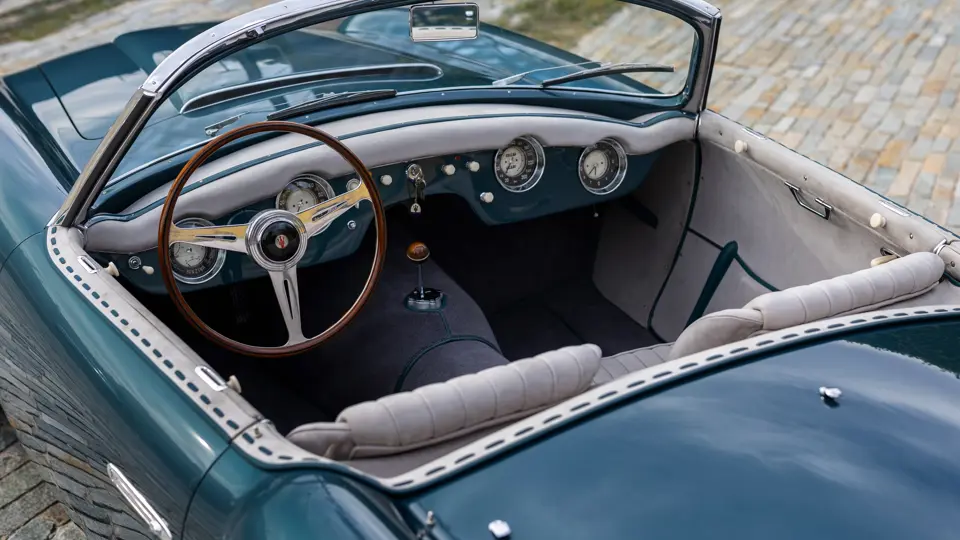

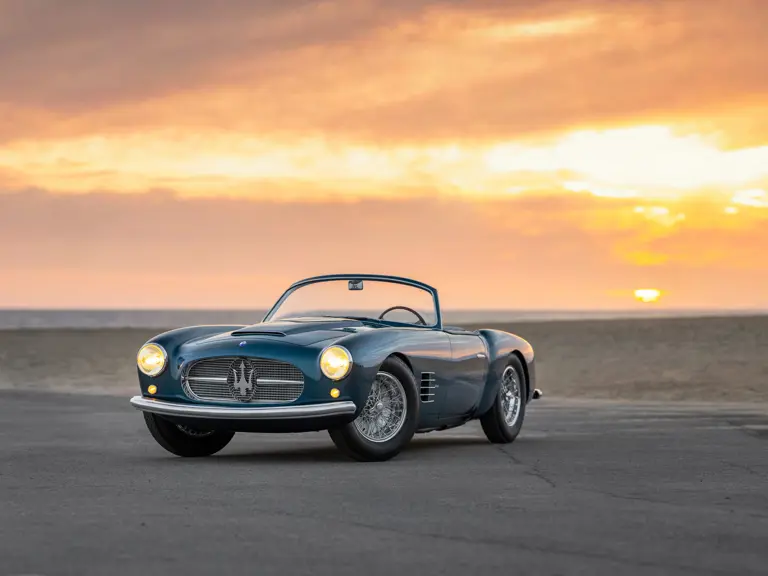
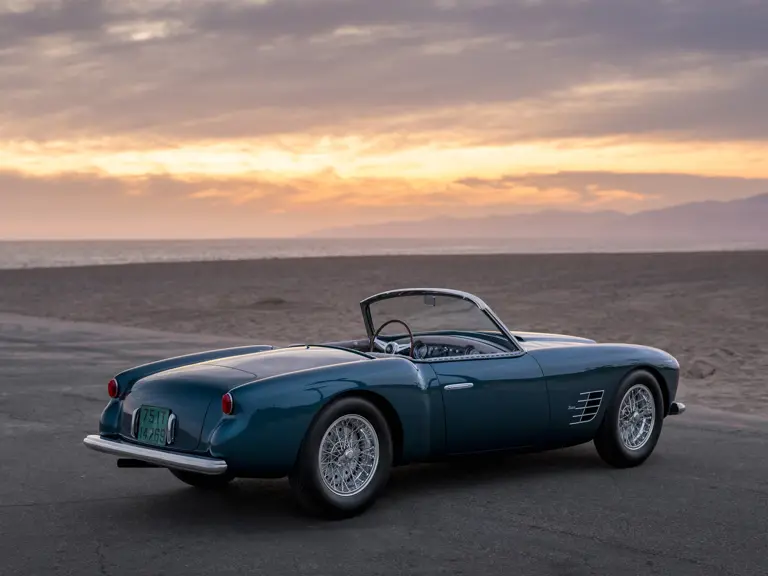
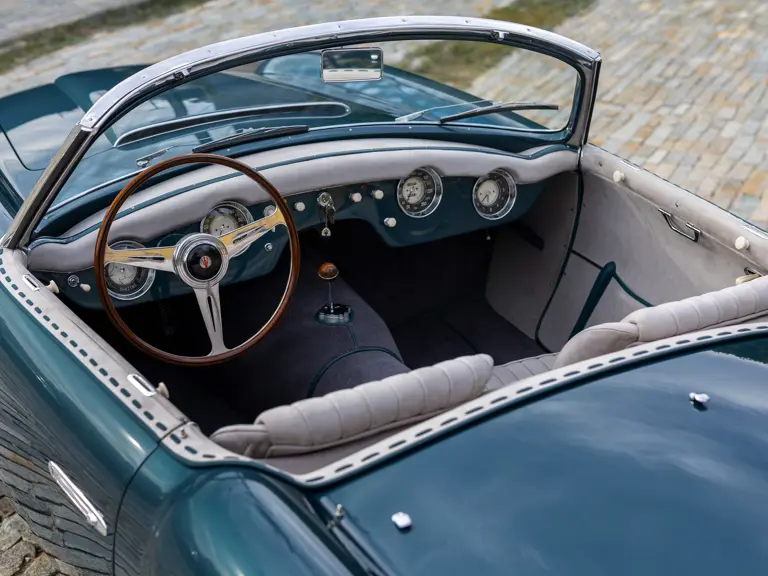
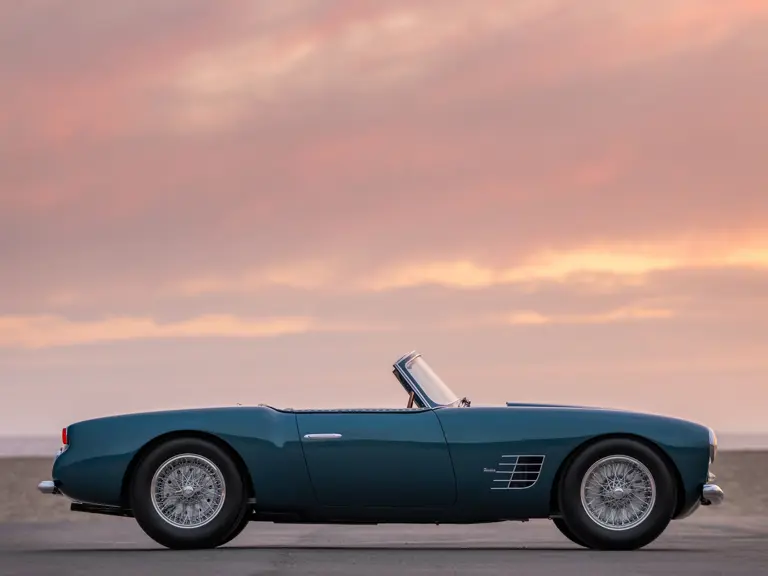
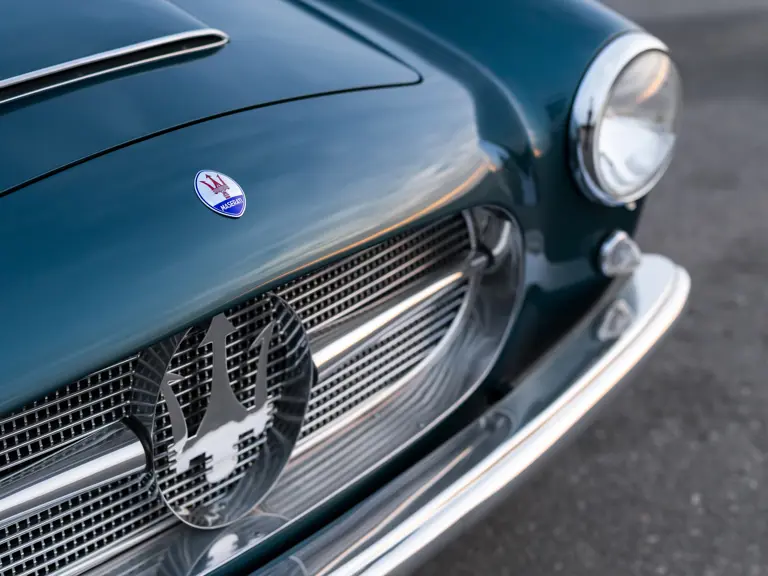
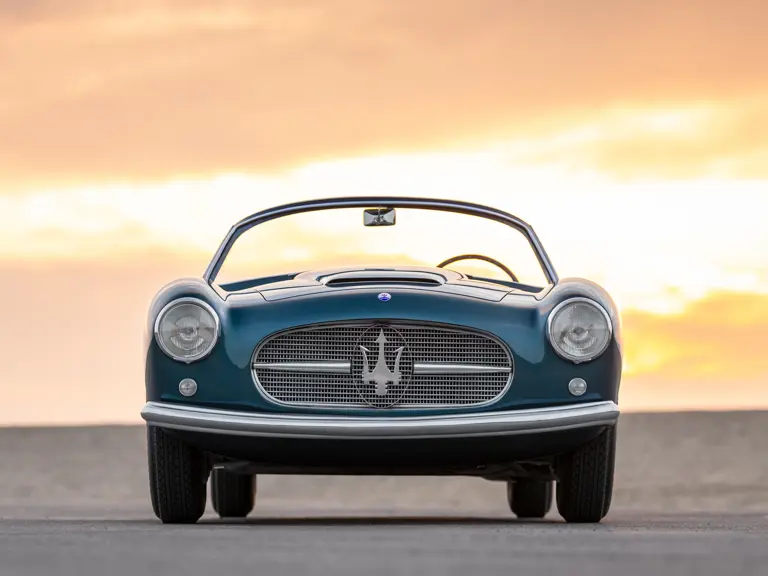
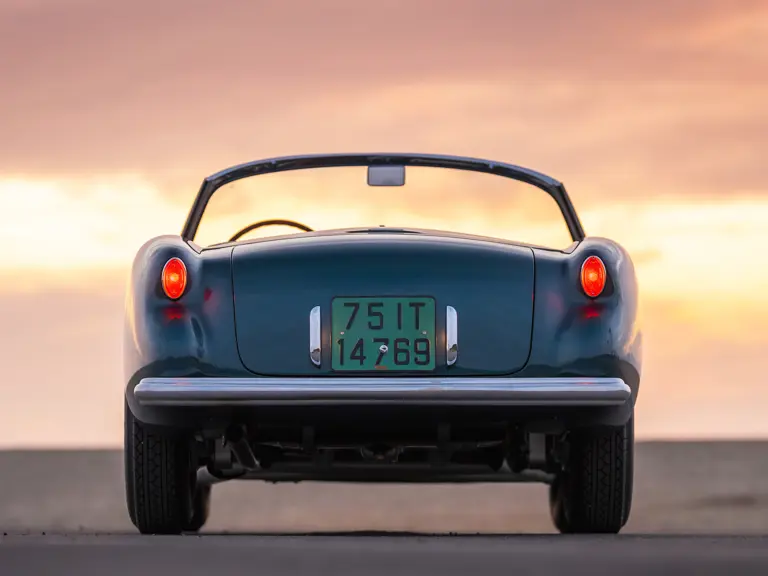
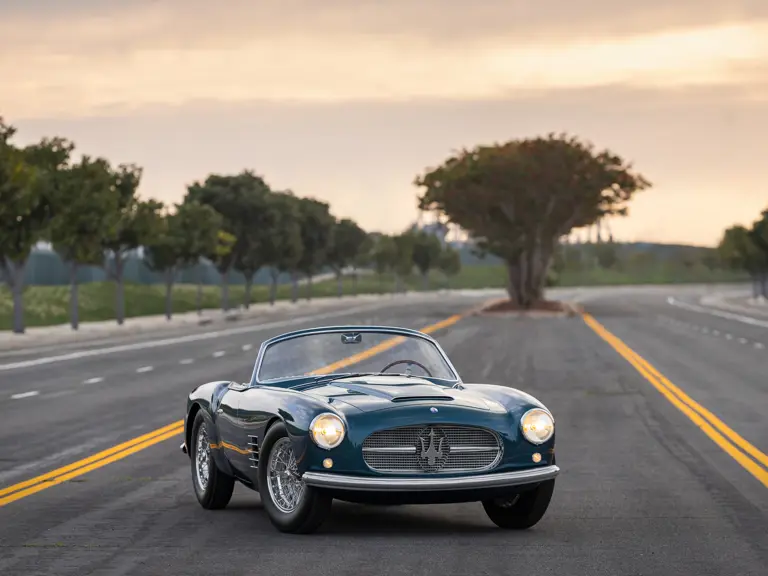
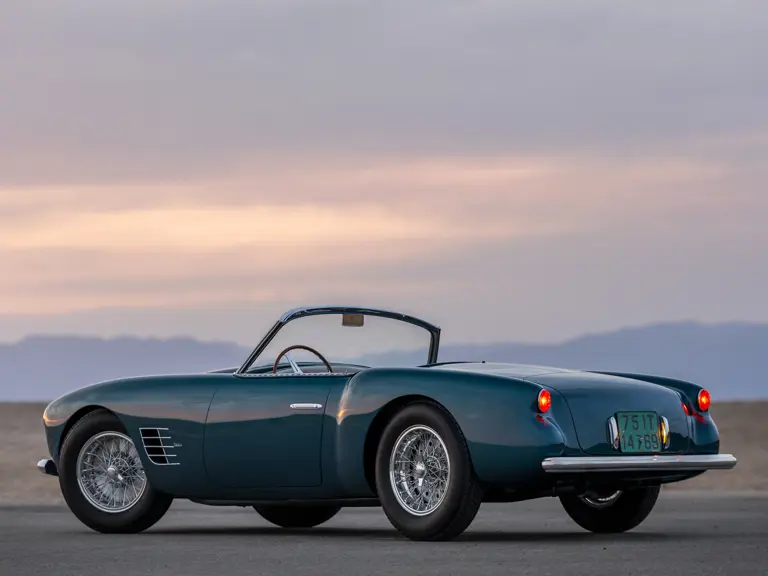
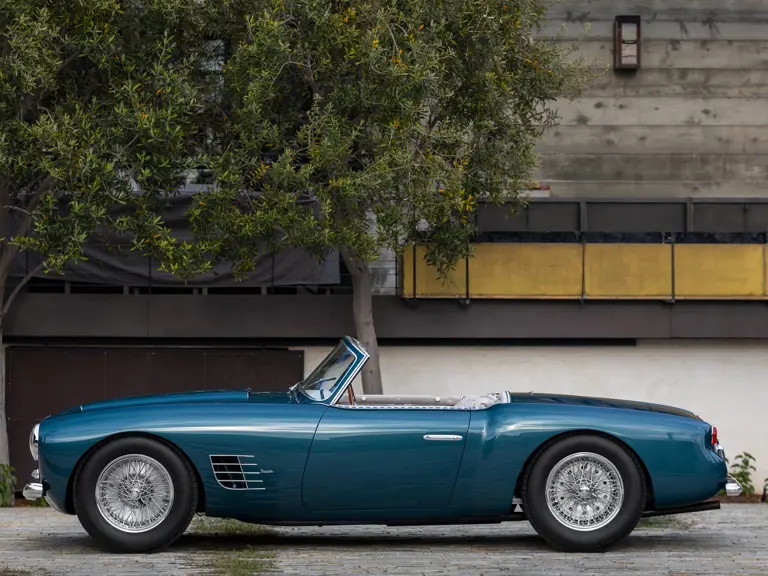

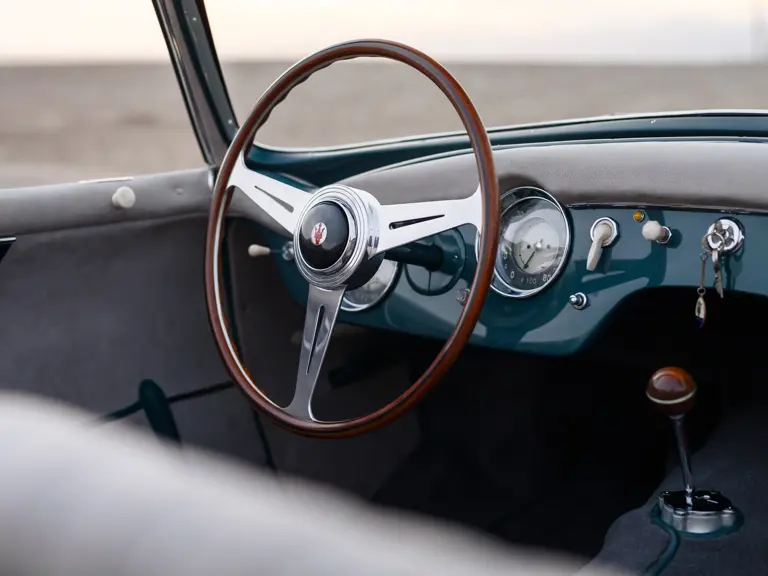
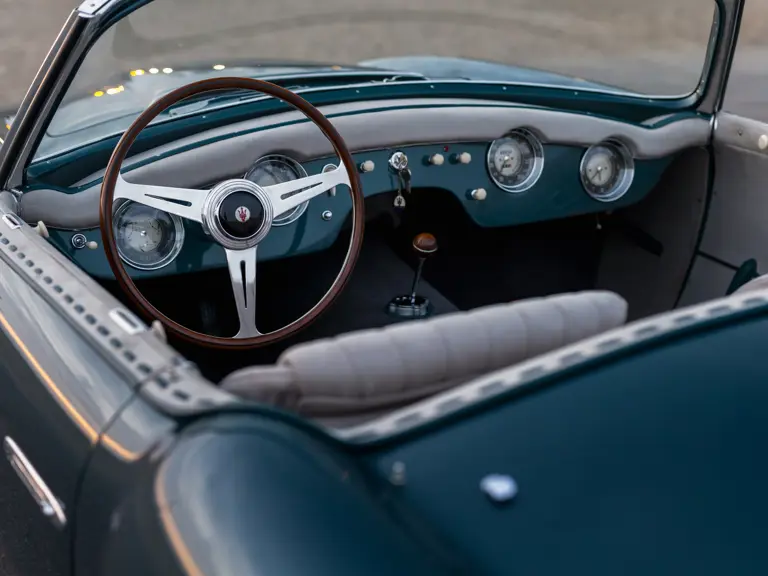
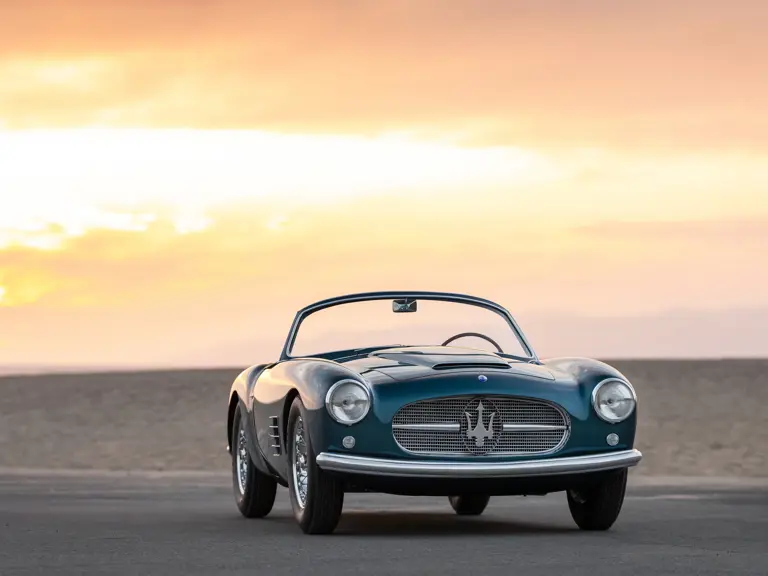
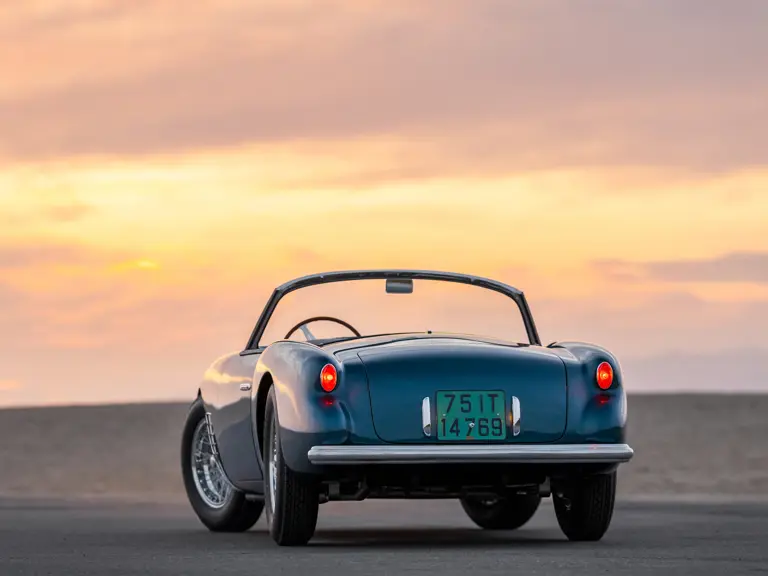
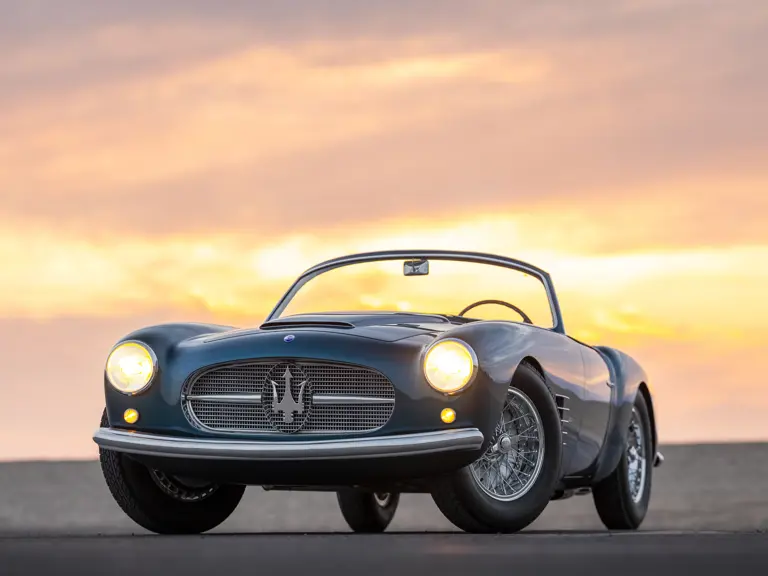
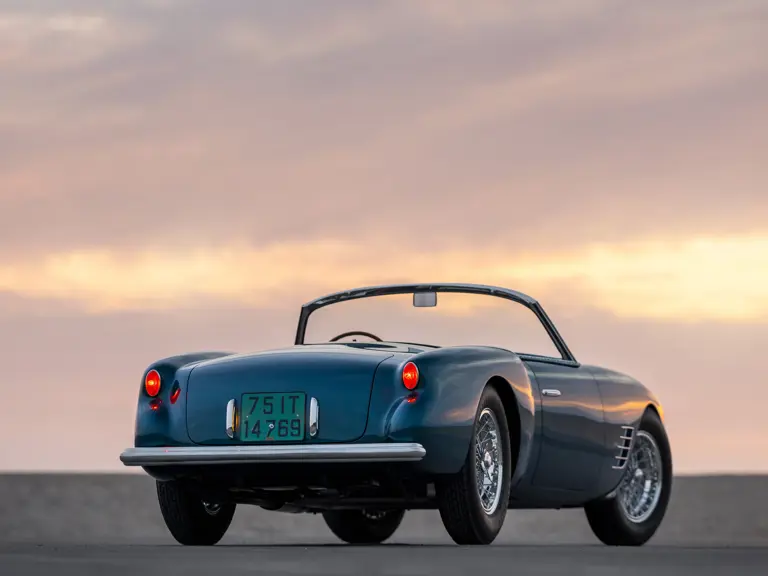
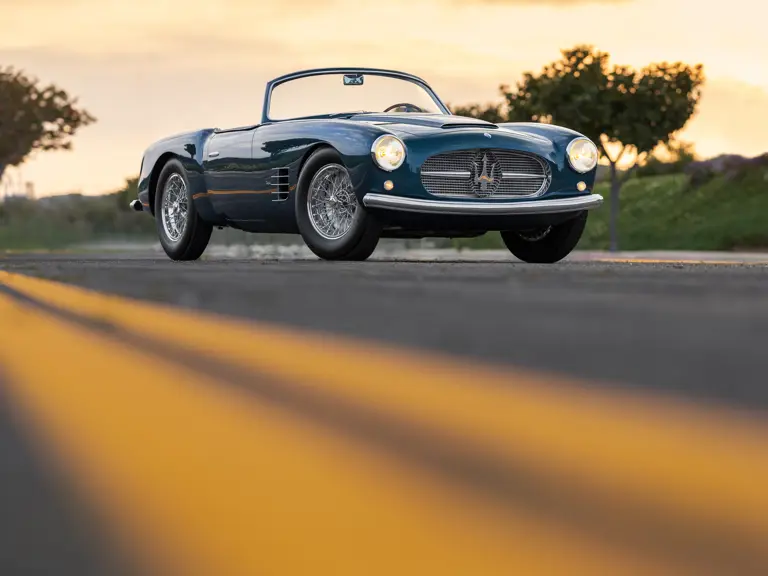
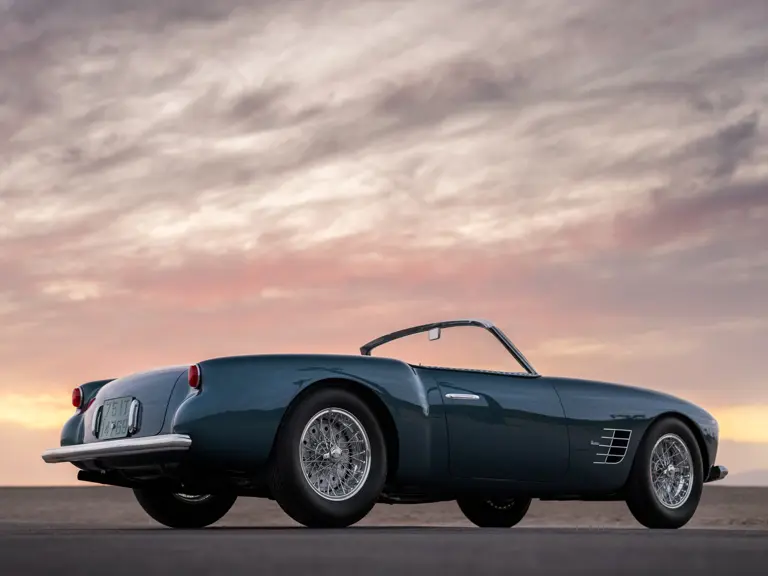
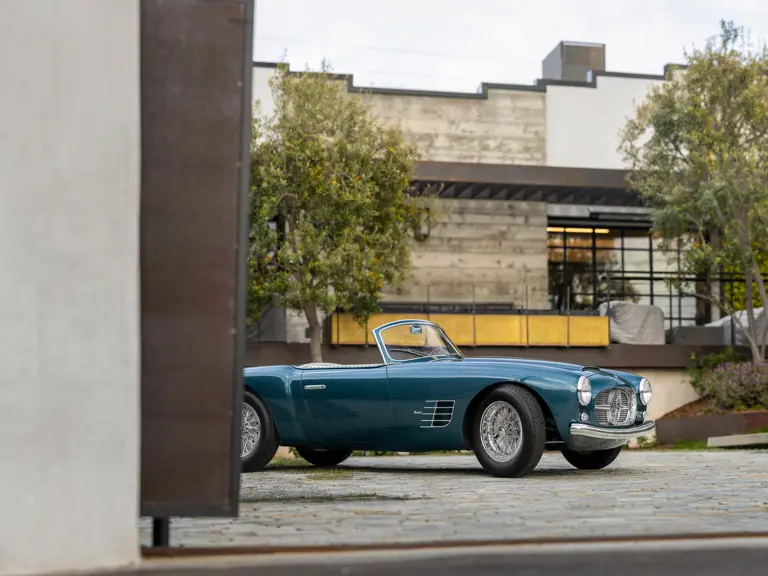
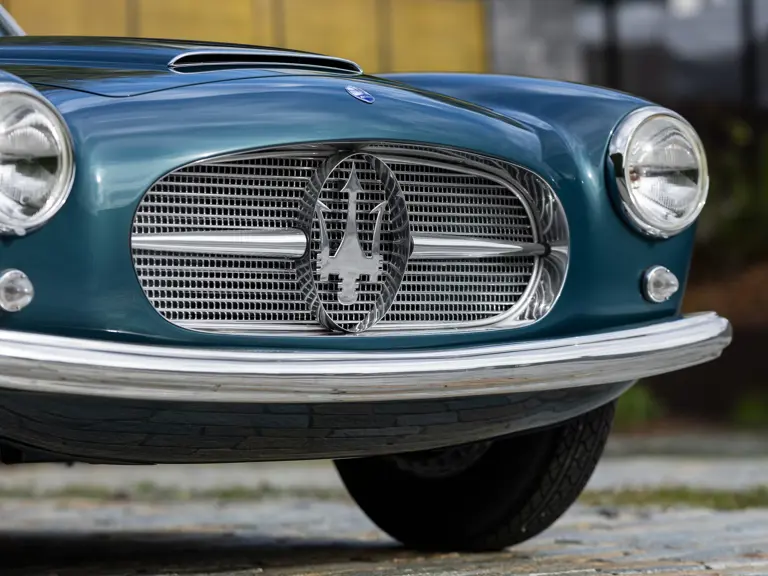
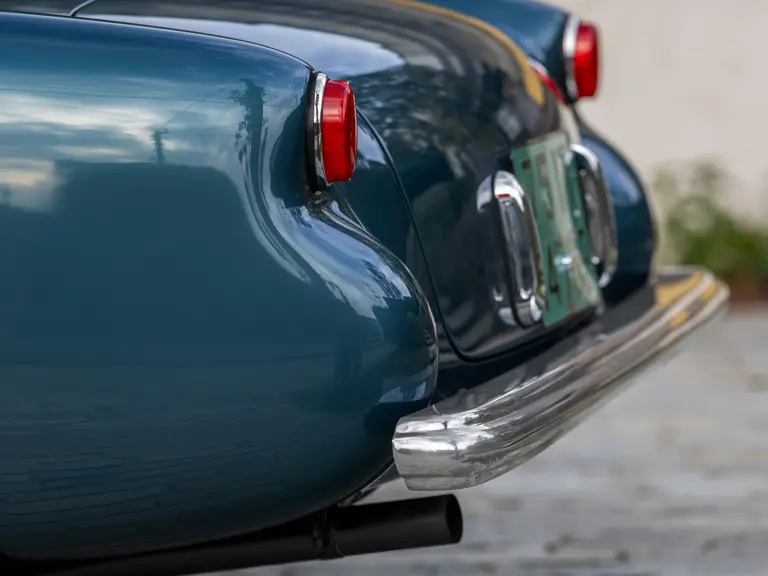
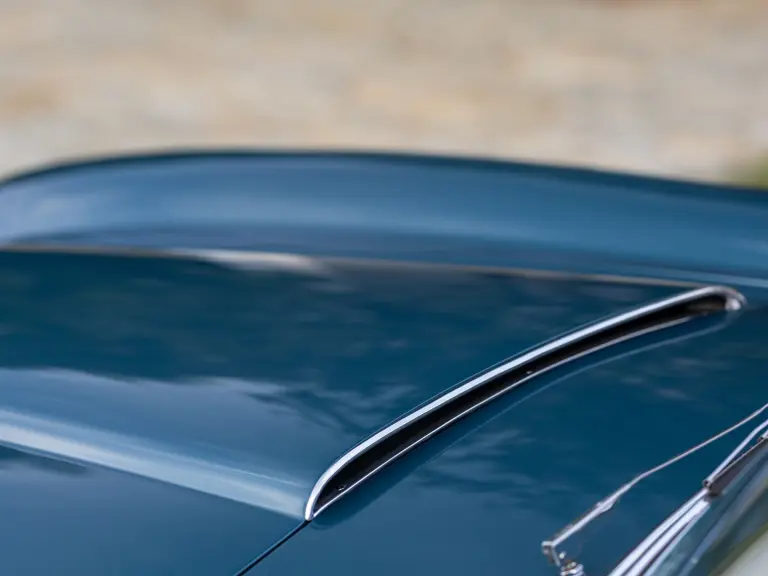
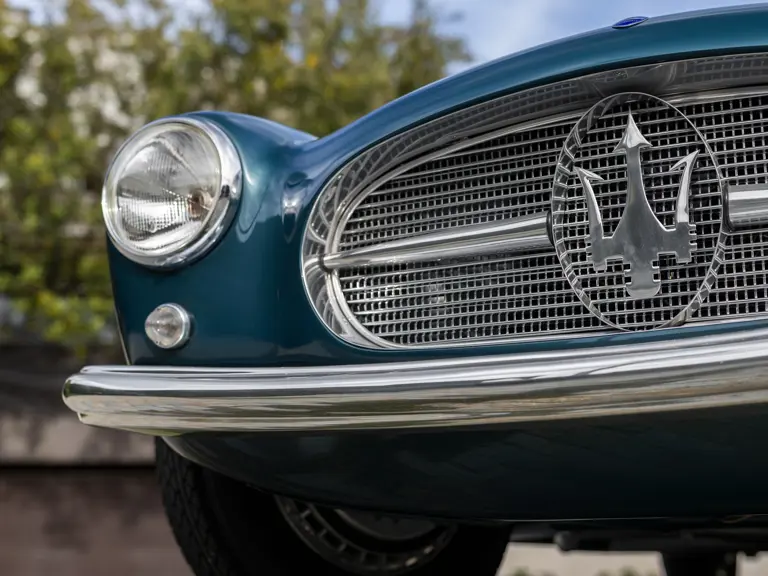
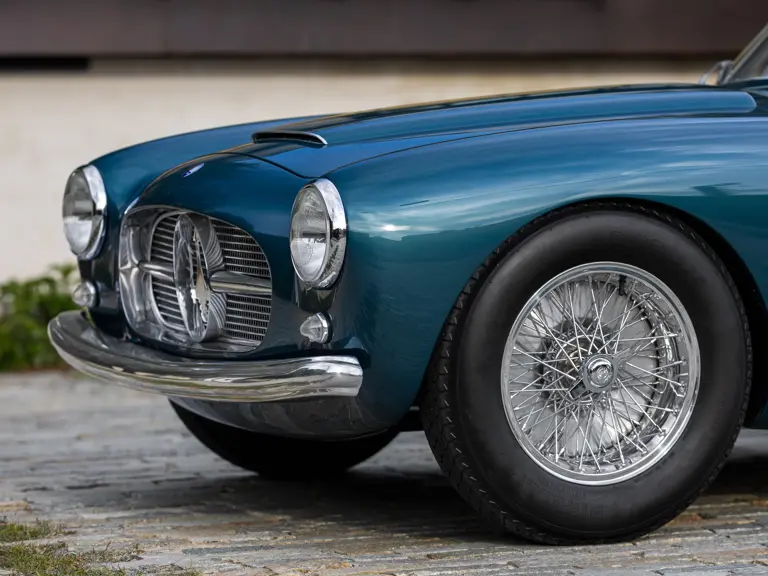
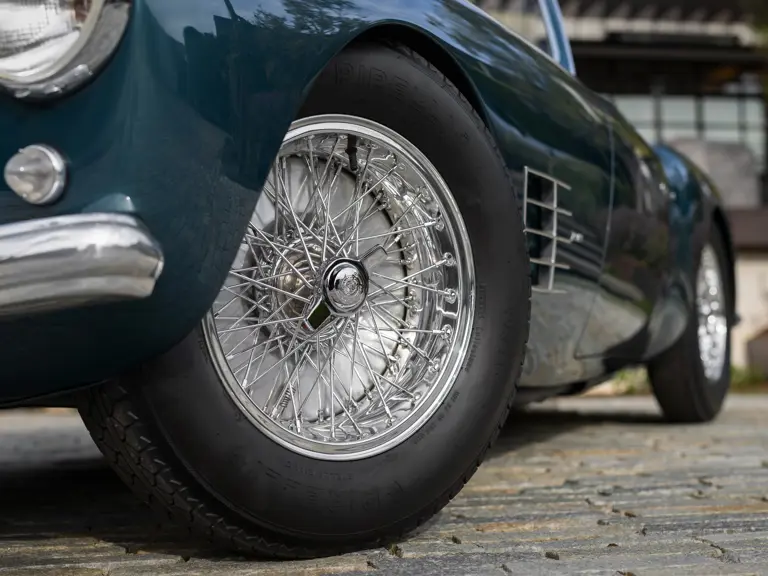
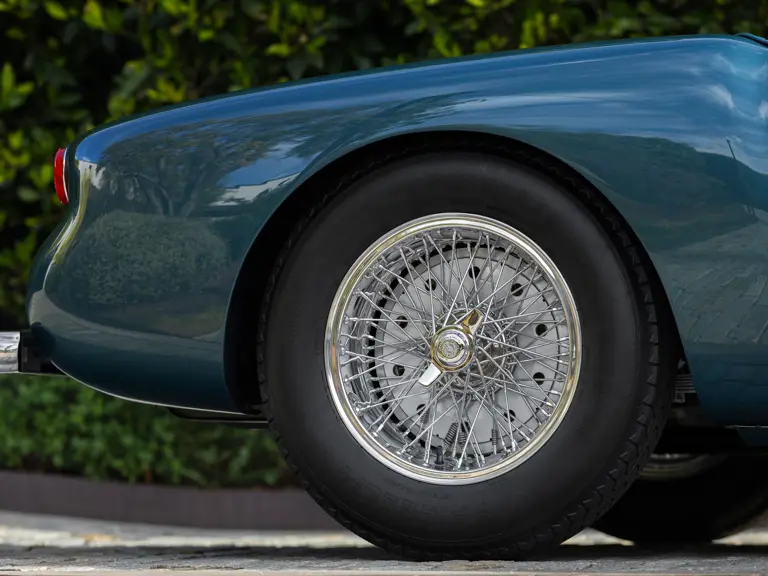
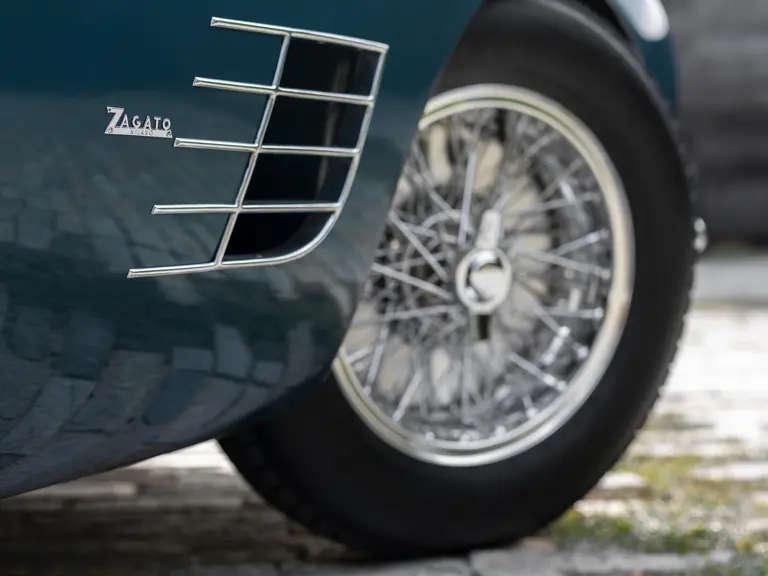
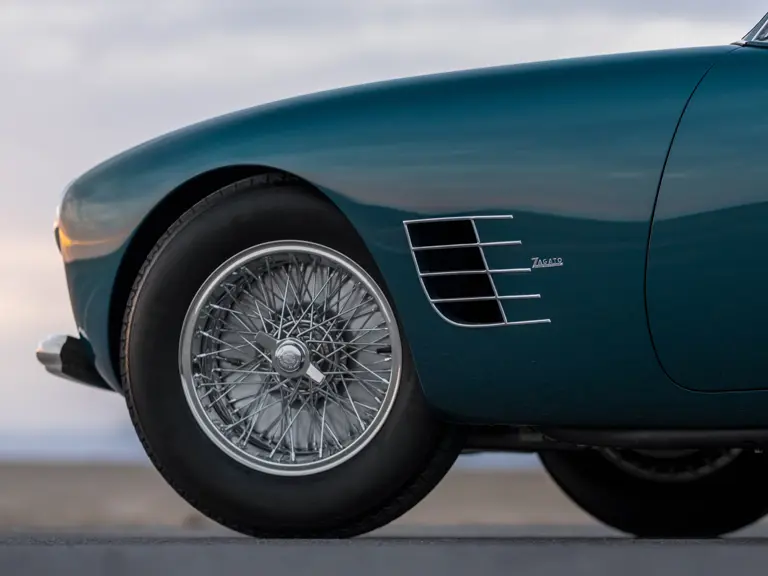
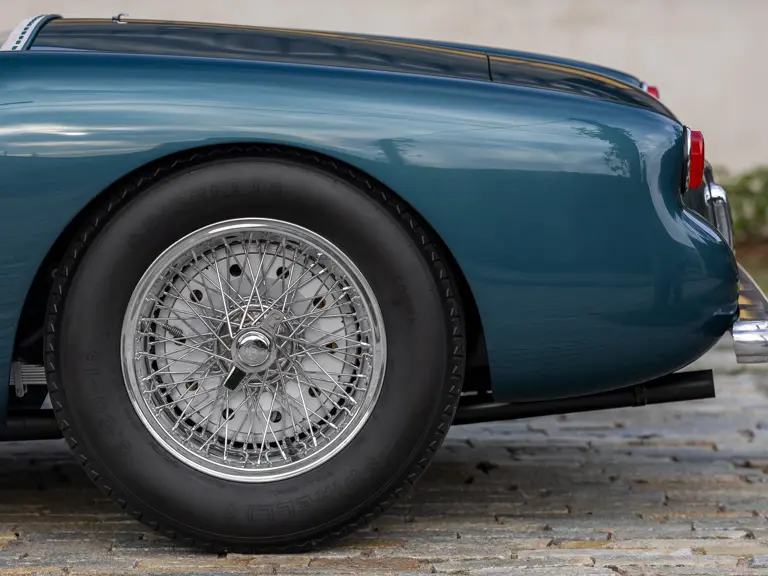
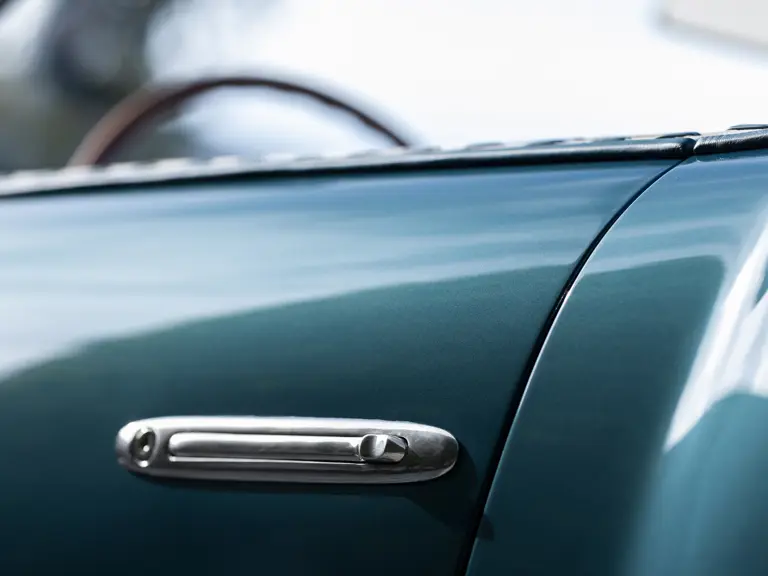
 | CULVER CITY, California
| CULVER CITY, California
